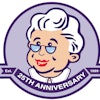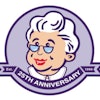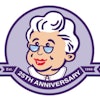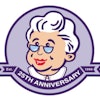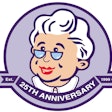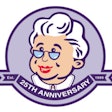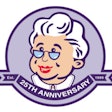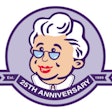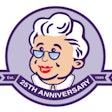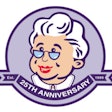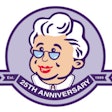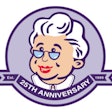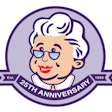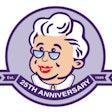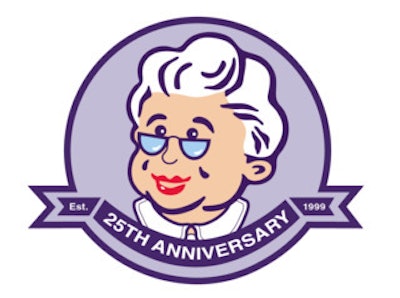
Editor's note: As part of the celebration of AuntMinnie.com's upcoming 25th anniversary, we're presenting 25 for 25 -- a series featuring our most popular content for each of the last 25 years. New articles will be published each Monday until our official anniversary at RSNA 2024. MRI safety articles have always been popular with our members, so it’s not surprising that our top article in 2019 reported on a safety incident in Sweden.
The police investigation into last Wednesday's accident at a mobile MRI unit in Swedish Lapland is underway and likely to take several weeks. Chilling details are emerging about the incident that led to a specialist nurse being seriously injured, and members of the country's imaging community have started to respond.
"The accident raises questions about how it could happen. There will be an investigation, conducted by the Swedish police. Aleris [the company that owns the equipment, the MR trailer itself, and employs the injured person] will also make an investigation of their own," Emma Bergström Wuolo, press officer of the Norrbotten Region, formerly known as Norrbotten County Council and Sweden's northernmost region/county council, told AuntMinnieEurope.com.
Breach of regulations
According to the latest reports in the Swedish media, the nurse got stuck outside the gantry; his screams and the appearance of a hand inside the scanner alerted the patient that something was wrong, Dr. Hans Ringertz, PhD, professor emeritus at the Karolinska Institute in Stockholm, told AuntMinnieEurope.com.
The patient reportedly got out of the magnet at the back of the machine and rushed to try to help the nurse, he continued. The nurse's head was trapped outside of the machine, and a strap of the weighted vest became wrapped around his neck as the vest was pulled into the magnet.
Helped by the security officer, the patient tried to release the strap but was not successful. At this stage, the nurse was unconscious. The guard finally used a knife to cut the strap and they pulled the nurse out of the mobile unit, although it is thought the guard's batons and shackles got stuck to the scanner.
"The nurse who was injured is a qualified MR-sköterska and has been working as an MR-sköterska for many, many years," Bergström Wuolo added. "The accident was not caused by lack of knowledge. The nurse is very qualified and skilled."
In Sweden, an MR-sköterska must obtain a degree called röntgensköterska, so the references in the local media to an "x-ray nurse" being injured understates the formal competence of the man, who has not yet been named.
At a press conference on October 24, Aleris reported that the nurse had been moved from the intensive care unit to a regular ward. His condition has improved, and he said he was feeling OK under the circumstances, Bergström Wuolo noted.
"He has asked us to pass along a message regarding the accident, and that is that he is very grateful for the help he got from the security guards who arrived at the site and the other persons who helped out. He is very happy to be alive," she added. "We cannot comment further on any vests or other objects that may or may not have been involved in the accident."
Henrik Kennedy, press officer at Aleris, confirmed on October 29 that the injured person is very experienced and is much better now and has left the hospital.
"We have switched off the MRI machine and are helping the police in every possible way," he told AuntMinnieEurope.com. "We have registered the accident with the authorities and started an internal investigation, but we will wait for the report on what caused the accident before we take any further steps. The police have today said that their investigation will take a few weeks."
"It is obviously a breach of regulations," noted Ringertz, who is an adjunct professor and associate chair of radiology at Stanford University and a former ECR president. "In mobile MRI units, they normally do not have any metal detector gates."
He recalled an accident in the U.S. more than 10 years ago, when a small baby was in the magnet and an oxygen tank flew into the magnet but did not touch the baby. The tanks are normally color-coded for nonmagnetic material, but this tank had been labeled incorrectly. Following the incident, metal detector gates were installed, he said.
Never work alone
Karin Tellin, development nurse and MRI safety officer at Huddinge University Hospital in Stockholm, told AuntMinnieEurope.com that she does not have all the details about the accident, but she thinks there are typically several causes of these kinds of incidents, including a lack of security measures and security training for staff.
Above all, staff should never work alone near the magnet.
"It's important to have well-known security procedures for all staff working with or near the magnet -- also for security guards and intensive care unit and emergency staff," she said. "It's necessary that all departments should have a security organization that ensures that there are updated routines and also can provide information [to everyone]."
Tellin expressed concern that insufficient attention is being given to MRI safety issues and there is a risk the medical imaging community is taking safety for granted, given the maturity of the technology.
"You can never ignore that there are human beings working, and everyone can make a mistake -- that's why no one should work alone," she noted.
The Karolinska hospital group has recently established an MR safety team involving staff at Solna and Huddinge. The plan is for every unit with an MRI scanner to appoint an MRI medical director (MRMD) radiologist, an MR safety officer (MRSO) radiographer, and an MR safety expert (MRSE) physicist.
"Our role is to ensure that every MRI examination is done safely, to develop documents, and to implement safe work procedures and policies for the business and ensure that these are complied with," Tellin said. "We must ensure that all staff who have access to the MRI zone receive proper training, as well as updating MRI safety training at appropriate intervals."
Following the accident at Luleå, 90-minute training sessions for the security guards at the Karolinska group were scheduled to be held on October 31 and next week. The guards will receive information about MRI, and they will enter the MRI suite to learn about the strength of the magnetic field, how to behave in the safety zone, and what to do and what not to do.
MRI safety
Hopefully the police investigation will reveal exactly what happened at Luleå, according to Jonas Hurtig, head of commercial and marketing at Synthetic MR in Linköping, Sweden. In the meantime, it's vital to stress that MRI remains a safe investigation.
"MR technology is mature and safe as long as you stick to standard procedure," he stated in an email. "As with all deployed technology, you need continuous training in order to maintain a high level of safety in daily operation."

